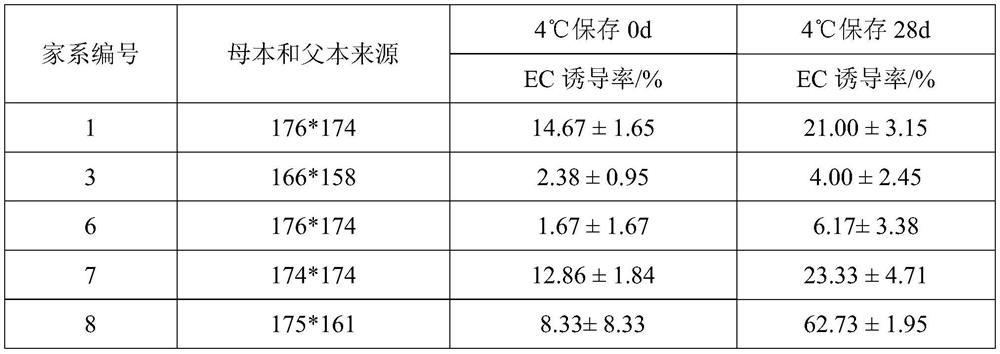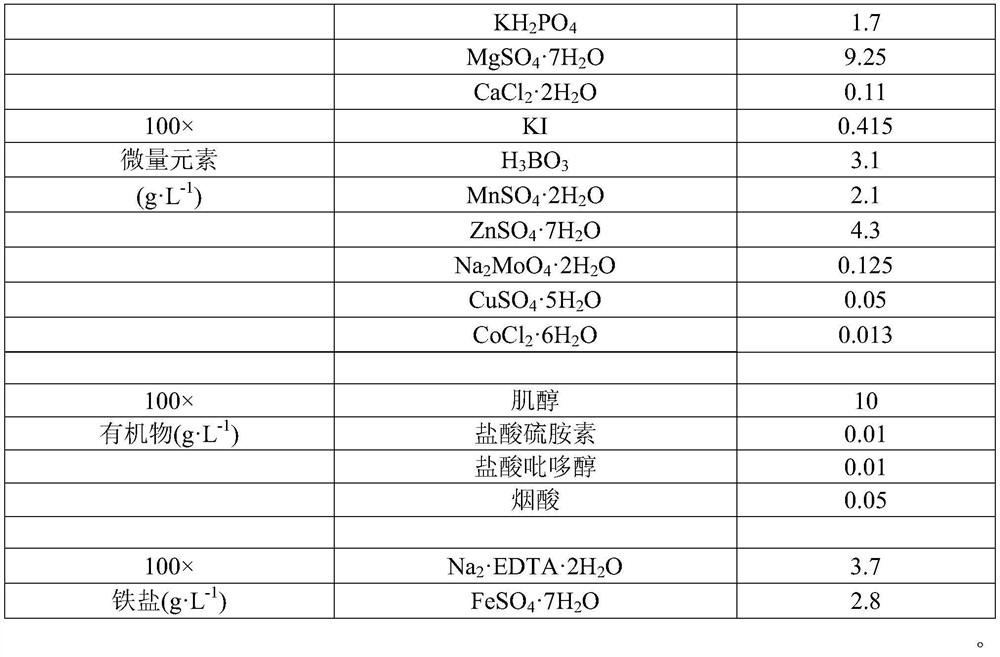Method for improving induction rate of embryogenic calluses of pinus koraiensis
A technology for embryogenic callus and callus induction, which is applied in horticultural methods, botanical equipment and methods, horticulture, etc., can solve research obstacles, low embryogenic callus induction rate, and physiological state requirements of explants Advanced problems, to achieve the effect of increasing the induction rate and improving the induction rate
- Summary
- Abstract
- Description
- Claims
- Application Information
AI Technical Summary
Problems solved by technology
Method used
Image
Examples
specific Embodiment approach 1
[0010] Specific embodiment one: a kind of method for improving the embryogenic callus induction rate of Korean pine in the present embodiment is carried out according to the following steps:
[0011] 1. Cultivate the Korean pine cones after pretreatment at a temperature of 4-6°C for 28-35 days to obtain the cultivated Korean pine cones; wash the cultivated Korean pine cones and peel off the scales, and then Carry out disinfection and washing treatment, then peel off the seed coat, continue disinfection and washing treatment to obtain sterilized female gametophytes; inoculate the sterilized female gametophytes in callus induction medium, and incubate at 21-25°C Under temperature conditions, culture in dark for 30-60 days to obtain cultured embryogenic callus;
[0012] Two, the embryogenic callus after the culture is mixed with the basal medium, shakes and centrifuges, and then filters to obtain the dispersed embryogenic cell mass, the quality of the embryogenic callus after the...
specific Embodiment approach 2
[0015] Specific embodiment two: the difference between this embodiment and specific embodiment one is: the pretreatment of Korean pine cones in step one is to use 75% ethanol solution to evenly spray.
[0016] Other steps are the same as in the first embodiment.
specific Embodiment approach 3
[0017] Specific embodiment three: the difference between this embodiment and specific embodiment one or two is that in step one, the cultivated Korean pine cones are cleaned and peeled off the fruit scales, and then the steps of disinfecting and rinsing are: first use 70 Treat with ~75% ethanol solution for 1 ~ 2 minutes, then rinse with sterile water for 3 to 5 times, then treat with 10% sodium hypochlorite solution for 15 minutes, and continue to rinse with sterile water for 3 to 5 times.
[0018] Other steps are the same as those in Embodiment 1 or 2.
PUM
 Login to View More
Login to View More Abstract
Description
Claims
Application Information
 Login to View More
Login to View More - R&D
- Intellectual Property
- Life Sciences
- Materials
- Tech Scout
- Unparalleled Data Quality
- Higher Quality Content
- 60% Fewer Hallucinations
Browse by: Latest US Patents, China's latest patents, Technical Efficacy Thesaurus, Application Domain, Technology Topic, Popular Technical Reports.
© 2025 PatSnap. All rights reserved.Legal|Privacy policy|Modern Slavery Act Transparency Statement|Sitemap|About US| Contact US: help@patsnap.com



